#Anzac Parade
Explore tagged Tumblr posts
Text
“CELEBRATIONS ON ANZAC DAY EVE WITH A DJ AND—”
dang i thought we had a few more years
#my post#people used to say eventually anzac day would become a celebration#cause the anzac parades were like massive#and didn’t seem solemn at all#and now they literally have this ad exist and air
1 note
·
View note
Text
actually the veteran thing is a good case of people being detached from the general societal attitudes about things.
I'd say the average person who served in the military is just proud of their time and likes the fact their relatives are all proud of them. and that's sorta it. it's something society at least sorta values and the government puts pride in it. you get to come to anzac day parades and feel proud every year. the question of killing innocent people literally never ever comes up.
that's the general attitude. the idea that it's a factory that radicalises people to be anti imperialists is a stupid cope based on some outliers
369 notes
·
View notes
Text
oh you know what else is a massive joke about ANZAC day?
at the dawn parades in the city of Tauranga, a place where many white south africans & "rhodesians" reside, so-called veterans who fought against Zimbabwean independence just invite themselves there, and no one does a fucking thing.
absolute joke of a ceremony
32 notes
·
View notes
Text
Headcanons of what biscuits each of the Tracies and everyone would like:
Alan first because we always seem to forget about him. He strikes me as a timtam enjoyer. He would definitely to the using them as a straw to drink milk through thing
Virgil would be resident mint slice lover
John to pennys disgust is an incorrigible dunker of biscuits in tea. She cannot reform him. Cause hes a mischief maker like the best he will do it in front of her while making eye contact while she resists the urge to tackle him as thats not polite. I think she has given in before. John is totally taunting her because it drives her up the wall. He misses it in space where free floating liquids are not a good idea. Hes yet to work out a scientific timing to let them get sufficiently soggy but not fall in but hes still trying to. He has been known to accidentally drop the biscuit in then fish it out with his fingers probably swearing. Then rapidly eat the soggy biscuit mess before anyone says anything before he goes back to pretending hes way too normal to do that.
Kayo. Jammy marshmallowy wagon wheels. No notes.
Penny’s secret vice is those pink ones iced ones with 100s and 1000s. Like the cheapest sugary ones. She will eat a whole packet if shes sad. They will without fail cheer her up. John has brought them for her and she cried all over him. She never had them growing up in endeds parades of fancy teas and biscuits. It was only when she was off at uni and knew john that she got to try them. John probably pulled them off a supermarket shelf and chucked them at her cause they were pink when they were grocery shopping for food together once and she decided to get them and loved them ever since. John doesn’t even like them but gets them for her.
I think Virgil would also like melting moments. He is unable to eat any sort of biscuit without getting covered in crumbs. He tries really hard but he has no idea how anyone else manages it.
Scott loved chocolate chip biscuits. But they have to be homemade. Secretly he hates those dry dusty store bought ones so much. He can bake them really well though but hardly finds the time.
Gordon. I dont know about actual biscuits but he definitely loves the crunch. Oh he would love those golden syrup and cornflakes or chocolate ricebubble crackles school bake sale treats so much
John for specifics id say shortbread creams. Ginger thins. He is a biscuit fiend in general and absolutely loves many of them. He also insists on calling them biscuits.
Grandma has tried to make anzac biscuits. They came out …authentic. Historically authentic.
Kayo knows about her girlfriend's love of sugary pink biscuits. She found out somehow even though John is sworn to secrecy. Penny was over the moon when she brought them out for their quiet night in after their fancy, nice date was interrupted by work after dessert was quite ruined after being smashed over the bad guy's head.
Thoughts for Brains, Parker and others? Favourite biscuits you want to tell about? (i need to know) (for science) (also biscuit recommendations)
#thunderbirds are go#astrawrite#scott tracy#john tracy#virgil tracy#gordon tracy#alan tracy#kayo kyrano#lady penelope#grandma tracy#a little bit of#shadowrose#because its pride month
22 notes
·
View notes
Text
The australian version of ghosts theyre making makes me mad . The characters are so dumb compared to the UK and US versions of the characters, except for joon who tbh is the only one who feels like he should be an australian ghosts character. WHERES THE ABORIGINAL CHARACTER?? WHERES THE CONVICT CHARACTER???? WHERES THE ANZAC VETERAN?
Ive only watched the US ghosts but from what ive seen of the UK ghosts its similar in that . The ghosts are fairly unique to their countries. in the US ghosts there is a viking, a pre-colonial (flirting with colonial) era Lenape character, a US revolutionary war officer, a gilded age housewife to a robber baron, an Afroamerican jazz singer who dated a bootlegger, a free love lives-on-a-commune hippie, a 1980s scout leader, and a finance bro douche. Thorfinn, Isaac, Hetty, Pete, and Trevor are all adapted from the UK show (Thorfinn=Robin, Isaac=The Captain, Hetty=Fanny, Pete=Pat, Trevor=Julian) and the rest of the characters were replacements of others in the UK version. But like heres the thing and idk if I'll explain it good. The US ghosts wanted to closely adapt the UK ghosts, so they had some very similar characters, BUT the UK ghosts are very distinct to the UK. You can't just have the same characters and put them in the US and call it a day, because UK history is not the same as US history. Plot twist. You can't have a UK ww2 officer in US ghosts because British ww2 history is very different to American ww2 history, so you adapt him into a Revolutionary War officer. You can't have a UK caveman in US ghosts because . well it'd be racist to depict a precolonial native american from ~5000 years ago as a primitive being. and also it doesn't fit in US history . the US doesn't have its caveman era of human history the same way the UK does. So the caveman is adapted into a viking. And on that note a pre-colonial Lenape character would not be in place in the UK ghosts because the UK doesn't have a Native American history in the way the US does. Alberta couldn't have been from the UK ghosts, she's a very US history-based character. A 90s Tory MP disgraced in a sex-scandal is a very UK character and I may be wrong but that is the kind of character that couldn't really be from anywhere but the UK. These are characters that reflect their country's histories and you can't just. Have the same characters in a different country.
The Australian ghosts seems to be doing the opposite? The ghosts don't seem to be distinctly Australian for the most part, except for the Chinese gold-rush miner and maybe the Irish potato famine immigrant. An 80s aerobics instructor? Could be any country's history. A betrothed edwardian socialite? Could be any commonwealth country's history. A motorbike gang member? I may be off base but thats fairly universal.
And it's not like Australia doesn't have a unique history!! There are characters you can make that are very Australian. Tbh Joon shows that it's not like. Impossible (I'd keep him in my cast of characters even though the Asian gold-rush miner isn't unique to Australian history (see: Aotearoa, USA), but I do think an Asian gold-rush immigrant isn't the most basic ass generic 19th century character and is like. A part of australian history). What about a pre-colonial Aboriginal character, or an Aboriginal character who was affected by the stolen generations? What about an escaped convict turned bushranger who got in a gunfight and died or something? What about an ANZAC soldier who like. survived ww1 but died of a heart attack at an ANZAC parade a decade after, in uniform and everything? What about a post ww2 Greek immigrant who did manual labour to make a living (my personal idea is make her a lesbian but anything could work)? What about an aussie rules football player?
Like. I would be so interested in that version of ghosts Australia. It would feel like a distinctly Australian show, not one that could've been made in any former British colony. I may be wrong but idk . I feel like the characters they made are really generic and could have been from anywhere
4 notes
·
View notes
Text
Anyway it was a bad day today. Nothing bad particularly happened for the first half- just got reminded of some shit from when I was a kid. Which is always super fun. /s.
No, seriously. I had a mental breakdown because there was a thread about social isolation and ostracism on reddit. It wasn't meant to be a sad thread- just asking autistic people if they had a gloob (sp?) moment in school. (Where they thought everyone hated them, but in hindsight people liked them.) And so many answers including mine had personal details like- no. It was pretty obvious they hated us. Maybe not all of them, but enough of them. Those emotions have been picking at me recently, and that thread just made them impossible to ignore i guess.
It was anzac day yesterday. I worked it. Did nothing for it. Didn't take the girl i was working with anywhere, except a walk around the block. The parade started at 9am, during a bad time regarding handovers. So i didnt take her there. Would've only got there as the parade ended anyway. Didn't take her to the cenotaph afterwards, either. What would be the point? She wouldn't appreciate it anyway. And because of that, *I* didn't go anywhere either. I'd considered going to the rsl for dinner... why bother when I have no one to go with? Its just appearances at that point. And i was tired from work, anyway.
And then mum drops the bombshell via phonecall this arvo, of three of her chickens being killed early on anzac day yesterday. A fox (?) dug into the pen, and killed three chickens. Dragged two away (possibly to a neighbours yard, from what Mum heard eevesdropping. But they denied they found any chickens.) And one of then was found dead inside the pen.
These chickens. I'd been around to mum and dads old house prior to their move to look after these chickens. They weren't my birds but. Man. I knew those chickens. Even if i couldn't name them. I just called them lovely ladies, or ladies. Hosed down their poo, topped up their water, gave them corn. And now three of them are dead.
They-as always- thought a new house would be a miracle. A new town would be a miracle. But something bad always happens when you move, because that's how life goes. Nothing goes untarnished. Something bad will always happen in a new life. It just happened *really early*, this time.
They still let their cat, Peach, go outside during the day. For ages, they'd learnt about free roaming cats, when Casper got mauled to death by a dog while in our driveway. They built catios. They kept Minty (while I lived with them), Shadow, Jarule, and Peach, inside. But then honestly, got sloppy last year. They'd keep her in the catio overnight, and let her out during the day. And that worked up here, kind of. It was always risky and I hated it. But now they've lost three chickens. Brought three next day to replace them. My sister doesn't understand why she can't see bok bok anymore. Why shes in a box underground. She wants a goldfish. Shes five and doesn't get death yet. Chirpy, the remaining chicken, is fighting her new flock. And they're going to inevitably lose Peach, too.
Reminds me of that post, either posted here originally, or reposted from reddit, where someone keeps adopting cats because coyotes keep killing them. And someone commented they were just feeding the coyotes.
Mum said they're fixing the coop. Dads digging pavers into the ground, to prevent digging under and into the coop. I hope they're not just feeding the foxes. I hope I'm paranoid about Peach. I hope she passes of old age before the foxes eat her. But shes not *that* old. I hope it wasn't the neighbours stupid terrier that they apparently let out of its yard sometimes.
I just. Fucking hell that sucked to hear today. Today was a *lot*. On the plus side, i have some stuff to bring up with my therepist on monday?
#summerly talks#if mum rings back saying tgat peach is dead im just gonna have to hang up#they didnt know thisd happen to the chickens. didn't know foxes xould get in. but they know NOW#if it happens again its just neglegance on their part fuck
2 notes
·
View notes
Note
HIIIIIIII!!!!!!!! :D IM BACK FROM DAWN PARADE!!!!!!! :3 and I have a bit of an angry rant to go on whichever TROGLODYTE decided to put me next to Daniel for parade will see the sharp end of my blade before the day is done. not only do I hate Daniel, I damn him to the deepest part of the underworld for all eternity. he is the most disgusting, irritating, skin-crawling, loud, annoying, smelly little troll I have ever met in my thirteen years of existence on this planet. he smells like a rotting zebra carcass left out in the savannah. my words are not enough to describe the pure, unbridled hatred I feel for this rotten egg sandwich come to life. he was so loud the entire time, did not salute, was out of time when marching, screamed a slur during the national anthem, and laughed, fucking LAUGHED during the last post, the most sacred part of the dawn parade. the last post is meant as a salute to those who have passed by playing the trumpet as dawn approaches. he laughed so hard when it ended, loud enough for EVERYBODY to hear, and guess who they blamed for this miscreants vile behaviour? ME. to say that I wanted him dead in that moment was an understatement. ANZAC day, a day meant for HONORING those who died in world war 2, and he pulls something like that. I won't stand for 'oh but he has ADHD!' as an excuse. he is medicated. I know for a FACT he is medicated because my divison manager has told me that every time I tell her about something he has done. my brother, with SEVERE, UNMEDICATED ADHD, was perfectly behaved the entire time he was on parade with his scout group. I hate him. I hate him will all the hate I can muster. I will not rest until I see that beast get what he deserves. but other than that I had fun!! :3
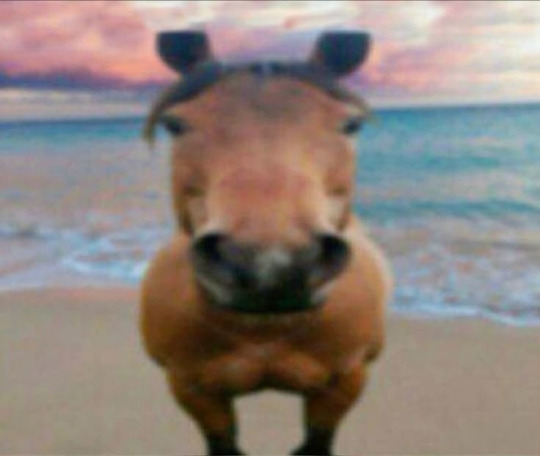
I say FIGHT HIM!!!! he sounds like an ass wtf 👎🏼
3 notes
·
View notes
Text
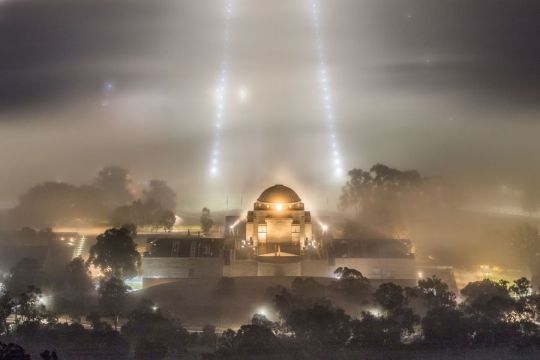
The Australian War Memorial and Anzac Parade from Mount Ainslie, Canberra under heavy fog. 19th May 2020. X
14 notes
·
View notes
Text
The Scheduling AU - Pt 5
Technically this was supposed to be more Wednesday orientated but I decided to focus more on Larissa just because it’s a good foundation to build off of for Wednesday.
So a few facts:
Larissa, Gomez and Morticia got together at 16.
Their story is actually kinda cute, about a week into their third year Gomez and Morticia had a conversation that went something along the lines of we both like each other and we both like Larissa, lets woo her together
And after that they were giving her little gift and casual touches and just generally being romantic to her all the time. And Larissa was soooo confused it wasn’t even funny
Until about 3 weeks into this they basically brought her a lovely bouquet with headless roses and lily of the valley, oleander and foxglove and a couple of sprigs of hemlock. And asked if she wanted to date both off them
She said yes while crying.
Before the open dorm system was implemented by Larissa, it was still gendered dorms and they couldn’t really visit each other. So Gomez would sneak out onto the roof and come over to the attic balcony so they could spend nights together.
About a month into being together Gomez got them a king sized bed because he was sick of pushing together the two singles. (How he managed to sneak in a whole ass heavy wooden frame and mattress is between him and Fester.)
Larissa is a knitter and crocheter. This means that in the winter months both her and Morticia (and later on, the kids to) are kitted out in matching sweaters and scarves. It’s honestly one of Morticia’s favourite things
One of the very first things that Larissa ever crocheted was a giant granny square blanket and I kid you not this thing was almost the size of California king bed. It’s huge and it’s well loved over the years. First in the dorm then at the manor, when they move in and finally it’s spent the last few years in Wednesdays room and made it to her dorm room. Funnily enough the colours used were mostly reds and purples and it’s one of the few items that Wednesday has that is colourful
Larissa, Morticia and Gomez get engaged at 20 just a year before they finish at Nevermore and are married almost as soon as they graduate.
The proposal was really funny. They were on summer vacation in Italy on a tour of the crypts and catacombs dotted around and the one they proposed in was called Juliet’s tomb
As you can imagine they all found it very romantic and each of them pulled out two rings and turned to each other and just started speaking all at the same time. Eventually they started giggling and slipped rings on each other in a very sweet moment.
Their marriage was very sweet, in the family cemetery under a full moon. They exchanged their vows and a goblet of their blood in a hand fastening ceremony
Now both the Addams and Frumps have a innate resistance to poison of all types and eating it just makes that resistance stronger and once Larissa had that blood in her system she basically gained that same immunity and eating often with family also built up that resistance.
Larissa really likes dancing especially with Morticia and Gomez and so they have adapted most dancing to a three person style.
I’m have to be early tomorrow for the ANZAC dawn parade so I’m going to end this here but tomorrow I’m going to touch on my favourite bit of this AU. Honestly I think it’s what started this whole AU so I can’t wait. Anyway goodnight y’all imma go bed now.
Prev / Next
#moo writes#the scheduling au#wednesday au#wednesday addams#wednesday netflix#wednesday series#larissa weems#morticia addams#gomez addams#I’m sure there are other things I meant to add but my brain tends to forget what I think in the cow shed#oh well theres alway tomorrow
11 notes
·
View notes
Text
23 June 2023
The Sea of Blood
Gallipoli 23 June 2023
The Turkish flag is crimson red, with a crescent moon and a star emblazoned upon it. The meanings of the star and moon aren’t relevant here - it’s the choice of red. It represents the sea of blood that was shed for Turkish independence.
On V Beach, on the 25th of April 1915, the men of the Royal Dublin and Royal Munster Fusiliers (plus two companies of the Hampshires) spilled out of the deliberately beached collier River Clyde into a storm of Turkish rifle fire. The scale of death amongst the Irishmen (like their Lancastrian comrades over on W Beach) was such that the ocean was stained red.
Ireland, Great Britain and Turkey are all very different cultures, but in the flag of a nation and the sea of an Aegean shore, they all bleed the same.
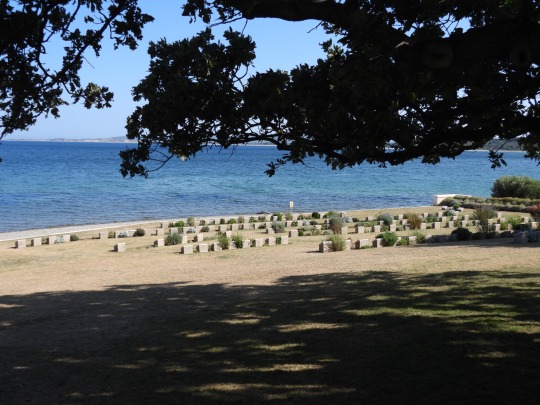
We started today at 8.30, catching the bus to the Beach Cemetary just beyond Ari Burnu, on the south end of Anzac Cove. Here we discussed the famed landing of 25 April - what we know of it, and what we know of it. The image of Anzac is a contested landing under withering fire, as reported in the war correspondant Ellis Ashmead-Bartlett’s dispatch. In fact, Ashmead-Bartlett was at sea on the 25th, and his report relied on second-hand information and some healthy artistic license - aside from at the Fisherman’s Hut to the north, the Anzac landing was largely uncontested. It was not until the ridges that the battle really began. Yet that contested landing is an integral part of Anzac lore, even after all the research that proves it mostly didn’t happen, and I think that’s because it’s such a heroic image - our version of Napoleon personally leading his men across the bridge at Arcole. Pre-dawn fighting also, of course, fits in with our dawn services - although I think the validity of the dawn service remains, as, contested or not, they did land at dawn.
We also stopped at Ari Burnu, where Ataturk’s (alleged) words are emblazoned upon a stone monument in front of the endless sapphire sea. We have a Turkish guide with us - that’s required by Turkish law, although she and my professor go back a long way - and she got me thinking a bit. Ataturk probably didn’t say those words, but as she said, does it really matter? Is the spirit more important than the historical authenticity? I don’t really have an answer to that. The historian in me says it absolutely does, but the citizen of the world in me says it doesn’t. (You may have heard the saying ‘inside me there are two wolves.’ Well, inside me there are two old white men.)

We went from there to Johnson’s Jolly on the Second Ridge, where we explored the old trench lines that have been rediscovered by battlefield archeology. It was here that I became the most recent casualty of the Gallipoli campaign, because I fell into one of the trenches. My only injury was a very slight wound on my arm, but I’ve got a sense of pride in being the last person (for maybe a day or two) ever to be wounded at Gallipoli. From Johnson’s Jolly (named after an artillery officer who would ‘jolly up’ the Turks with his battery’s fire - black humour was and is an intergral part of military life - we headed down Shrapnel Gully (again - there’s more than one path through it) to the 4th Battalion Parade Ground Cemetary. As the name suggests, most of the men buried here are of the 4th Battalion, largely made of New South Wales men, but there were a smattering of other men from the 1st Brigade, a few New Zealanders, and some men of the Royal Naval Division. We’ll talk about them at a later date, I promise.
We continued on after a brief interrogation of the Parade Ground, stopping to look over Monash Valley. Brigadier John Monash commanded the 4th Brigade, which consisted of men from all states. Monash was by all accounts a fairly mediocre brigadier, and at Gallipoli he’s most known for getting his brigade lost during the attack on Hill 971; he was eventually promoted, of course, and became a first-class corps commander in 1918. Looking over the terrain, I wonder if critics of Monash’s performance as a brigade commander are being too harsh - the distances at Gallipoli are tiny as the crow flies, but men, of course, do not fly. They have to navigate rough and unforgiving terrain, to climb and descend steep hills, often where no paths exist. It was inevitable that confusion would reign supreme.
Everything I learn of Gallipoli blackens my opinion of the entire concept of the campaign.

We ended our trek at Shrapnel Gully Cemetary, where we remained for a while to examine the graves there. By now the heat of the day was really setting in, and we returned to the hotel to wait it out. I ate noodles for lunch. I have no idea what kind, but I enjoyed them. Then I rested - I’m reading Gary Sheffield’s Short History of the First World War to reorient myself on the course of the war, and I quite like it.
At 5pm, we reassembled at the bus and headed down to Cape Helles. If one looks at a mapo, they can see that Gallipoli resembles a bare shoe, gingerly poking its toe into the Aegean. Helles is essentially the toe. This was the British and French sector - although Australian battalions did go to Helles, and British troops did fight at Anzac, so it was never quite so simple.

Our first stop was V Beach - one of five beaches attacked by the British in this sector. I think looking over V Beach today was the first time I experienced a really strong emotional connection on the tour - despite the modern boats and new buildings in Sedd el Bahr, the contours of the beach are almost exactly as they were in 1915. It looked almost like a colourised version of one of the pictures taken from almost our exact position after the landing. In my mind’s eye, I could picture the River Clyde - the Trojan Horse collier serving as a landing barge - beached in the shallow water, the scores of doomed men trying to clamber out, the few survivors huddling in the shallow shingle at the end of the small beach, and that blood red sea. I did not imagine the sound or the smell - I do not think such a thing could be imagined. I did feel a distinct lump in my throat, though, and a sense of disgust at the waste that happened here.
The British Memorial at Helles overlooks V - to the west, you can just about see W Beach (or Lancashire Landing), and if I had climbed the tower I’m certain I could have overlooked X and Y to the north, and S to the east. One of the great absurdities of Helles is that the landings at S and Y went off without a hitch, but they were starved of reinforcements as Generals Hamilton and Alymer Hunter-Weston dispatched their reserves to X, W and V. This is a cardinal military sin - you reinforce success, not failure. Yet in the grand scheme of things, it would have made little difference. Having more men at Y Beach (the British troops there called it ‘Why Beach,’ as they had no idea why they were there) wouldn’t have enabled the Allies to advance rapidly on the Dardanelles. Gallipoli does not smile upon rapidity.

We moved on to the Turkish Memorial. For legal reasons I can’t give my full opinions on this, but I can describe the structure. It’s almost like a flattened arch (and indeed, was meant to be a modernised Roman arch), the Turkish flag emblazoned on the roof. Ataturk had once said that a memorial as high as forty meters would not be enough to properly commemorate the dead of Gallipoli - so fittingly, this memorial is forty-one meters tall. The Turkish defenders are listed on surrogate graves around it, their names etched on red glass. It’s an evocative image, especially in the evening sunlight. There’s also at least three statues of Ataturk on the precint and I probably missed some, which gives you a very good idea of just how central he is to the Turkish story of Gallipoli.
We also noted here that of all the nationalities that fought at Gallipoli, only one is not commemorated here. I’m actually not going to tell you what that is - I want you to guess.
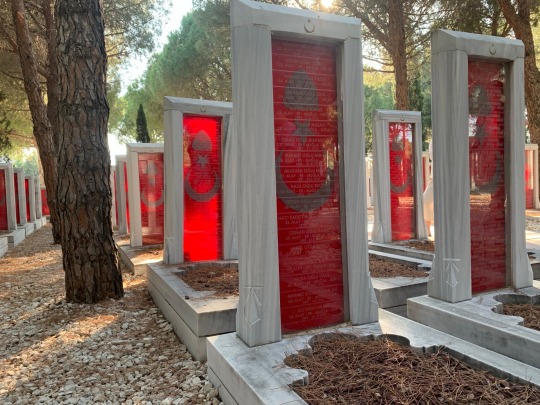
We continued to the French memorial - or perhaps French-led memorial is a better term. The French names are attached to catholic crosses very poorly disguised as the fleur-de-lys to provide plausible deniability to the Turks, who generally don’t like big, visible crosses on their land. I say French-led because a great many of these men are actually Senegalese - men recruited from the French colonial empire in Africa. Many of these men were appallingly treated and wasted on the battlefield - to say nothing of what became of them when captured by the Germans. Their rewards were anonymous graves, with no effort to mark their religious beliefs, and almost certainly no benefits from the state for the families they left behind. Even the Indians in British service got the basic decency of having their faith marked on their gravestones - no such luck for the Senegalese.
We ended the day near Krithia, the scene of three useless slogging matches fought in April, May and June to capture the heights at Achi Baba. This land is much flatter and more open than Anzac, but there are lots of ridges and rises that aren’t immediately obvious. The Ottoman forces, like Wellington before them, clung to these positions, and the British, French and Anzacs took heavy casualties in their fruitless attempts to dislodge them. Even the Third Battle of Krithia, which was deliberately smaller in scale and in which one corps actually managed to take their objective, came undone when Hunter-Weston insisted on spending his reserves on failing attacks in other sectors, allowing the Turks to regroup and retake their positions.
In case you’re feeling too sorry for old Hunter-Bunter by the way, he once referred to heavy casualties suffered by one of his battalions as ‘bloodying the pups.’ He was, and I hope you will excuse my vernacular, an absolute fuckwit.
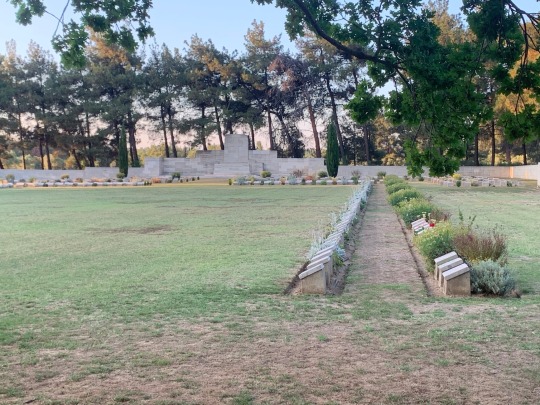
The Redoubt Cemetary is a little way south of that unassailable town of Krithia, and is a testament to stubborn endurance in the face of all sanity. In particular there are a lot of men who died on that last June attack, the ‘limited’ offensive - Manchesters, Royal Lancastrian Fusiliers, Marines and sailors of the RND, Leicesters and Cameronians and Sikhs and Royal Scots. Amongst these proud and distinguished old regiments are men from Australian and New Zealand battalions, killed in the attempt to support the British 29th Division at the Second Battle of Krithia. Accounts by their British allies record the bravery of these men under fire, painting the very image of Anzac - except, of course, their attack had been planned in about thirty minutes, and they never came anywhere close to their objectives. Men were mown down like wheat before a scythe - my professor’s words. Some were burned alive as bullets set off their ammunition, while others were disemboweled by machine gun fire.
There’s a very clean painting by Charles Wheeler in the AWM depicting the moment the Second Brigade advances, their Brigadier, Jim McCay, fearlessly urging them on while exposing himself to fire. It sanitises the slaughter that follows. It also doesn’t tell us that McCay, that glorious Victorian image of military heroism, was detested by his men for sending them into that battle. (McCay will be back, unfortunately - he’s proof that the ‘donkeys’ were not just British.)

We left the British sector at around 8.30pm, and drove alongside a beautiful red sunset back to the hotel. At this point, I’d be remiss not to mention Maddi, one of our student helpers. I tend to mention the really dramatic stuff and leave out all the little administrative things that tend to go wrong. When these things happen - like some idiot falling into a trench, for example - she’s been consistently on the case. She’s one of only two helpers responsible for handling twenty-eight university students, which is like herding cats, except the cats tend to be more organised. She has been doing an absolutely superhuman job at it, and I can say with confidence that none of this would be possible without her.
Well, that concludes Day Two in Gallipoli. Tomorrow, we’ll visit two of the most evocative sites in the memory of Gallipoli - Lone Pine in the morning, and in the evening, the Nek.
2 notes
·
View notes
Text
Federation Way is a connecting path between ANZAC Parade and Sydney’s Centennial Park.
Used by pedestrians and cyclists, it looks spooky this time of the morning, but is quite busy, I had to wait for some bike lights to move by.

5 notes
·
View notes
Text
well it's like i always say, "buy war medals on ebay and wear them to ANZAC day parades until someone yells at you"
33 notes
·
View notes
Text
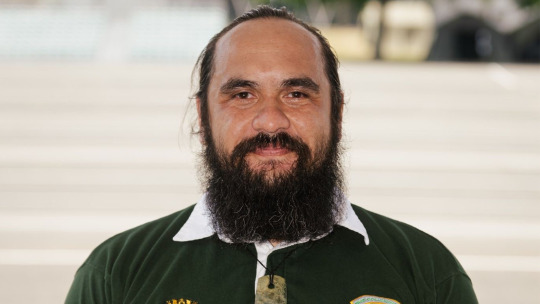
Kiwi sailor joins HMS Collingwood team for second shot at Navy’s field gun contest – includes video Petty Officer Taane Tapp will be joining HMS Collingwood’s Field Gun Crew for the prestigious annual competition (Picture: Royal Navy) 13th June 2025 at 9:12am Petty Officer Taane Tapp from the Royal New Zealand Navy will once again compete in the Royal Navy and Royal Marines Charity (RNRMC) Field Gun competition later this month, representing HMS Collingwood in one of the service’s most gruelling ceremonial events. The 33-year-old instructor is part of the base’s Warfare Training Group and has been selected for the final crew after months of preparation. Originally from Te Tai Rāwhiti, New Zealand, PO Tapp now lives in Gosport with his wife Belinda and their two children. Just get fit and get on with it : Army recruits share no-nonsense tips for basic training Proud Honorary Colonel Bear Grylls inspects passing out parade of junior soldiers Army chooses value over volume as instructors get less shouty with new recruits “I am honoured to be part of the HMS Collingwood Field Gun Crew this year,” he said. This will be his second time competing in the historic contest, which sees teams from across the country, and beyond, race to manoeuvre heavy field guns over obstacles in a timed test of teamwork, discipline, and raw physical strength. The RNRMC Field Gun competition is a prestigious annual event (Picture: Royal Navy) Training began in February with gym sessions on base, whittling down more than 40 hopefuls to the final crew. Full track training with the field guns begins on Monday 23 June under strict safety protocols. PO Tapp brings extensive operational experience to the team. He previously served on HMNZS Te Mana during disaster relief efforts for Cyclone Gabrielle, and on Operation Crucible, a five-month deployment around Southeast Asia. Also part of HMNZS Te Kaha’s deployment to Gallipoli for the 100th anniversary of the ANZAC landings, he supported maritime security operations near the Gulf of Oman. His medals include the New Zealand Operational Service Medal, the NZ General Service Medal (Greater Middle East), and the NZ Defence Service Medal, all awarded in 2015. The proud tradition of the Field Gun Competition The Field Gun competition, which dates back to 1907, commemorates the Royal Navy’s role in lifting the Siege of Ladysmith during the Second Boer War. Teams of 18 run, dismantle, carry, and reassemble a field gun and limber in a dramatic race against the clock. The final event will take place during HMS Collingwood’s Open Day on Saturday 28 June, offering the public a rare chance to witness this iconic tradition in action. Related topics Tags and categories: All RNZN/NZDF News Past and Present via WordPress https://ift.tt/idH0bSp June 14, 2025 at 02:17PM
0 notes
Text
Outback Events in 2025: What’s On in Quilpie and Where to Stay Nearby
Quilpie, May 2025 - When you think of Australia’s Outback, your mind probably goes to red earth, open skies, and road trips off the beaten track. But did you know that Quilpie, a vibrant town in South West Queensland, is also home to a calendar full of exciting events that bring locals and visitors together?
From rodeos to art festivals, country races to opal-themed weekends, Quilpie comes alive in 2025 with community-driven events that celebrate the culture, history, and charm of the Outback.
Whether you’re planning a solo adventure, a romantic escape, or a group getaway, timing your trip around one of Quilpie’s signature events is a fantastic way to experience the town’s authentic spirit and enjoy its warm hospitality.
Quilpie Diggers’ Race Day
One of the most anticipated days on Quilpie’s social calendar, Diggers’ Race Day is a classic country racing event held around ANZAC Day. Expect a full day of Outback racing, fashion, live entertainment, and a buzzing atmosphere.
The event pays tribute to Australia’s military history while offering visitors a taste of genuine Outback fun. Think fascinators paired with dusty boots, family picnics under shady trees, and local commentary that’s as entertaining as the races themselves.
Pride of the West Festival
This celebration of Outback culture blends music, food, art, and storytelling into a colourful weekend of entertainment. With local bands, bush poetry, markets, and community barbecues, the Pride of the West Festival is perfect for visitors wanting to connect with local life.
Held in the cooler months, it’s also a great time to explore the surrounding area, enjoy guided tours, and experience Quilpie’s unique blend of Indigenous and settler history.
Quilpie Motorbike Gymkhana & Enduro
If high-octane fun is more your speed, don’t miss the Motorbike Gymkhana & Enduro event. Featuring dirt track races, enduro challenges, and off-road fun, this event draws spectators and riders from all over the Outback.
It’s a family-friendly day out with a country twist—there’s always a sausage sizzle, raffle prizes, and plenty of cheering. Bring your camera and sunscreen, and be ready to immerse yourself in true Outback sport.
Bulloo River Walks & Birdwatching Weekends
Not every event in Quilpie is high energy. For nature lovers, the cooler mid-year months are perfect for birdwatching, riverside walks, and peaceful weekends spotting wildlife along the Bulloo River.
The Shire Council often hosts birdwatching weekends that include guided tours, photography workshops, and ecology talks from local experts. It’s a slower pace, but deeply rewarding, especially for solo travellers and nature photographers.
Quilpie Opal Festival
No visit to Quilpie is complete without celebrating its most famous natural treasure: the opal. The annual Opal Festival includes everything from live music and street parades to market stalls, opal cutting demonstrations, and even opal fossicking challenges.
Whether you're a serious gem hunter or just want to try your luck, this is the best time to learn about Quilpie’s mining history, support local artisans, and take home a sparkling souvenir.
Quilpie Rodeo & Campdraft
Get ready for action, dust, and adrenaline. The Quilpie Rodeo and Campdraft is a thrilling, family-friendly event that showcases the strength, skill, and traditions of the Australian bush.
From bull riding and barrel racing to campdrafting competitions, this event is a must-see for those wanting a taste of rural life and horsemanship. The community spirit is strong, and so is the live music, dancing, and hearty Outback food on offer.
Outback Astronomy Night
As 2025 winds down, Quilpie continues to offer unique experiences. November brings clear skies and warm nights—perfect for an evening under the stars. Local guides sometimes organise stargazing nights in the open plains around town, where the Milky Way feels close enough to touch. It’s quiet, it’s humbling, and it’s something you won’t forget.
Combine this with a casual dinner in town, a solo walk along the river, and a quiet night at your accommodation, and you’ve got the recipe for the perfect end-of-year escape.
How to Make the Most of Outback Events in Quilpie
Whether you’re visiting for a specific event or simply want to align your trip with Quilpie’s seasonal highlights, here are a few quick tips:
Book early – Quilpie fills up fast around major events, and accommodation is limited.
Check local updates – Event dates may shift slightly, so always confirm with the Quilpie Shire Council or event organisers.
Pack for the weather – The Outback can be hot during the day and cool at night, even in summer.
Bring a camera – Almost every event includes photo-worthy moments, especially for those who love documenting local culture and landscapes.
Quilpie isn’t just a place—it’s a feeling. It’s warm greetings, dusty boots, and nights under a blanket of stars. It’s where community matters, and every event has a story behind it. If you’re planning an Outback trip in 2025, then ready to experience the heart of the Outback? Book your stay with Quilpie Accommodation today for comfort, convenience, and genuine country hospitality. Contact them today via email or call 0448 347 581.
0 notes
Photo
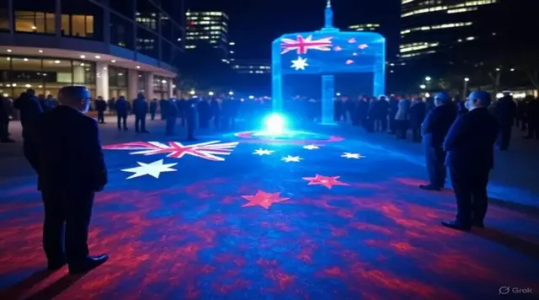
Australia Honors Anzac Day 2025 with Solemn Ceremonies Nationwide Australia marks Anzac Day 2025 with emotional dawn services, parades, and tributes nationwide, honoring veterans and strengthening intergenerational remembrance Read more #anzacday2025 #australiaremembrance #gallipoliservice #veteransparade #dawnservice #anthonyalbanese #militarytribute
0 notes

